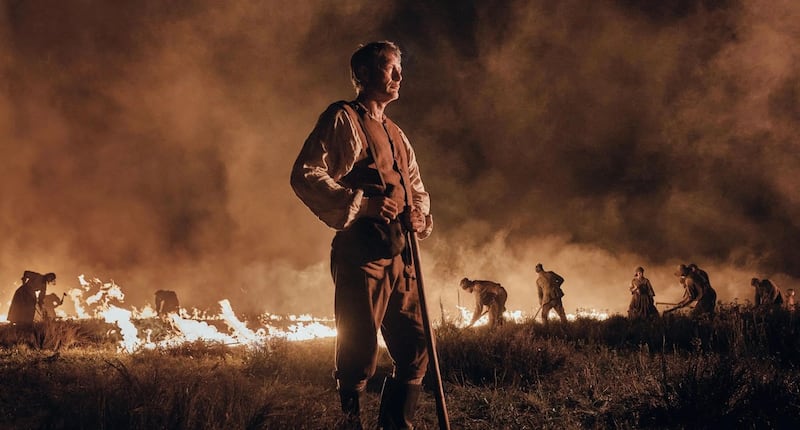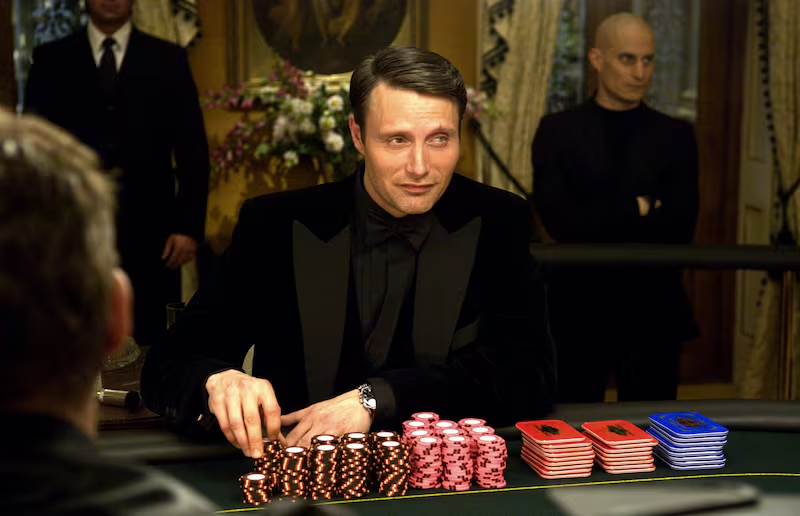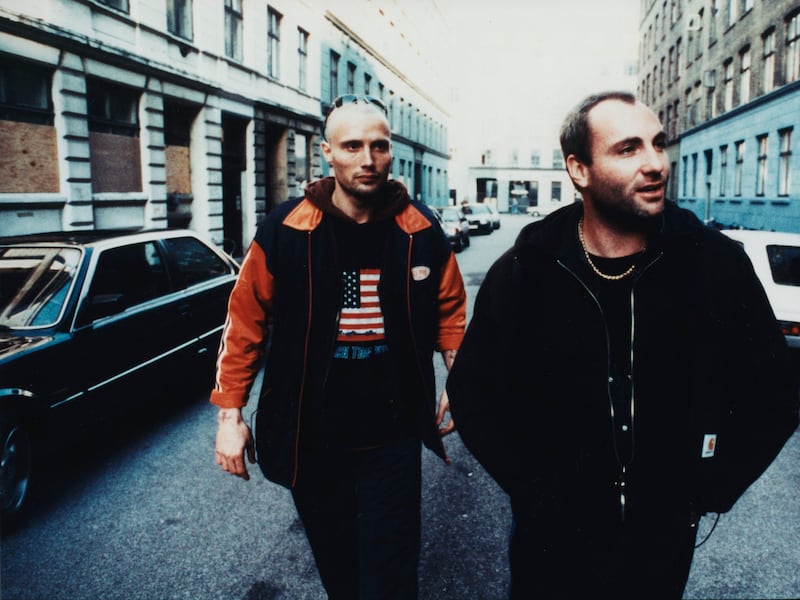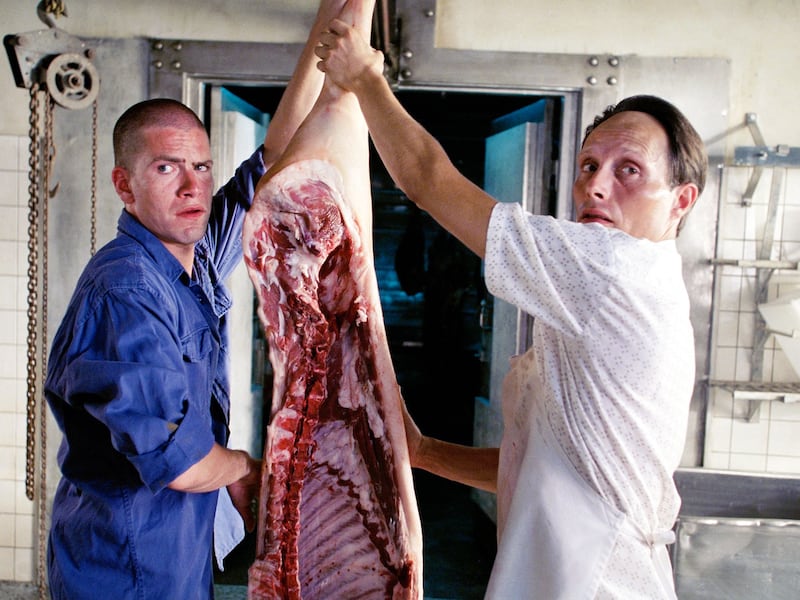When Mads Mikkelsen arrived on set to make his new film, a historical drama called The Promised Land, he was surprised to discover that some of the younger members of the cast were nervous about meeting him. On reflection, he could appreciate what they were feeling. “I do Hollywood films and I can just stand in the shadows,” the actor says. “It’s easy because, like, that’s Harrison Ford right there. I can stand back.
“It’s a little different at home. I’m myself every day. I go out. And then somebody wants a photo. On The Promised Land we realised during the casting that some of the actors had watched me since they were young. I had never thought about this, because I’m just me. So we had to get all that out of the way. I’m just another actor. I’m another human being. And the best way to do that was to have a couple of beers.”

Mikkelsen plays Ludvig von Kahlen, a Danish army captain of low birth who in the 1700s sets out to cultivate the barren Jutland heath in the hope of making his fortune – and instantly clashes with a local aristocrat, the villainous Baron Frederik de Schinkel, who becomes his nemesis.
[ Mads Mikkelsen takes another icy roleOpens in new window ]
It’s Mikkelsen’s second collaboration with the director Nikolaj Arcel, following the Oscar-nominated A Royal Affair. The film is set in “a really interesting period of history”, the 58-year-old says. “It’s 10 years before the Enlightenment. My way of reacting to things in 2023 could not work with this character. There were ranks, there were hierarchies. So we had to stay true to those. This is a stubborn man as well. His development is in very small steps. When you see it, it’s a bit like a Buster Keaton smile. It’s a big thing because it happens so rarely.”
READ MORE
The son of a nurse and a taxi driver, he grew up with a love of gymnastics, He went on to train as a dancer at ballet academy in Gothenburg
His role in The Promised Land (whose Danish title is Bastarden, or The Bastard) is the latest in a series of physically demanding parts for an actor who has shared screen time with a polar bear, in the 2018 film Arctic, and weathered the worst of Scottish weather as a Norse serf, in Valhalla Rising.
“Promised Land wasn’t so bad,” he says. “It was dirty and cold, but there was a trailer I could run into for heat. With Valhalla Rising we were in the middle of nowhere. And with Arctic I was in the Arctic Circle. There was nowhere to hide. I just had to suck it up.”
Mads Mikkelsen has played an awful lot of villains. In Casino Royale, he appeared as Le Chiffre, who, besides financing international terrorism, repeatedly whacks James Bond in the testicles. In Fantastic Beasts, he’s second only to Voldemort in the all-time league table of dark wizards. In Indiana Jones and the Dial of Destiny, he’s a Nazi-turned-untrustworthy-astrophysicist. It’s just as well, says the man who spent three series playing Hannibal Lecter, the people-eating forensic psychiatrist, that he isn’t a method actor.
“I will impact my character. He will not impact me,” Mikkelsen says. “That’s my philosophy. The work can impact you. You can have a good day or a bad day or you can be in a certain emotional state for a long time. I’m not going to ask my kids to call me Hannibal. That’s just insane.
[ Nicolas Winding Refn: ‘He kept asking my wife to have sex with him'Opens in new window ]
“There are some actors who do that who are fantastic. I try to jump into a character as fast as I can and leave as fast as I can. And I project myself. Hannibal loves beauty. He wants to taste everything. Sometimes the things he thinks are beautiful are not right. I will not find beauty in somebody’s death.
“I have to swap that image in my head so that I can express the honesty of that emotion. I’m not going down a path to figure out why he has to kill. I don’t want to go there. I just have to know he finds it beautiful and swap it for something I find beautiful.”

The actor has pondered his continuing reliability as a Hollywood bad guy. “It’s quite simple,” he says. “It’s the funny accent. It’s as simple as that. It used to be Germans, then it was Brits, then the Russians, and then for some reason they fell in love with the Danish accent. That’s definitely part of it.”
That accent was a defining element of his breakthrough role, as an unexpectedly cheery low-level drug dealer in Pusher, the 1996 Scandi hit, directed by Nicolas Winding Refn, that ultimately spawned two sequels and two remakes. Since then Mikkelsen and Refn have worked together frequently, including on Valhalla Rising. Back on that first film, it turns out, the director had no idea what the actor was saying.
‘We were all fascinated with Bruce Lee when we were young. He was just so cool. He had an elegance in his movement, but he also had an interesting face’
“It was both class and dialect,” Mikkelsen says. ”I mean, Nicolas is not an upper-class guy, but he has very upper-class language. He has the queen’s language, shall we say. He was well-travelled as a young man. He knows more about film than anyone in the world. But he did not know anything about the streets of Copenhagen. He had a strong vision, but he didn’t know anything about the environment.

“He needed people who could interpret the streets for him. My language was that environment. I had a really working-class, fast, mumbling language. I didn’t have any technique or any knowledge of how to do it. And Nicolas was, like, ‘Whatever. It sounds funny.’ That stuck with me for a long time in drama school. I had a hard time letting go of that identity. It took me a while to work out that I could change into other things and still feel at home.”
Acting happened accidentally for Mikkelsen, who is the son of a nurse and a taxi driver. Growing up, his first love was gymnastics; he went on to train as a dancer at ballet academy in Gothenburg (where he also learned Swedish and met his wife, Hanne Jacobsen). He danced professionally for almost a decade.
“It was kind of a Billy Elliot thing, because I lived in a working-class area and I couldn’t really tell my friends what I was doing,” Mikkelsen says. “When they figured it out, then they realised there were so many good-looking women at my school and in dance that they all wanted to be dancing.” Before that, as a child, he says, “I did tons of different sports. I loved graphic novels. I loved escaping into those worlds. But, predominantly, I remember climbing stuff. I was living around a lot of working-class houses and flats, and backyards, and cemeteries and stuff. It was like an adventure for me: ‘What’s behind that?’ ‘What’s up there?’ It must have killed my parents to see me. Every time they looked out the window: ‘Oh my God. What he’s doing up there?’”
That schooling, and the dance career it led to, also provided the grounding for Mikkelsen to perform the magical choreographed final segment of the Oscar-winning Another Round. Ironically, the actor fought with the film’s writer and director, Thomas Vinterberg, over what has become his signature scene.
“I was very adamant,” Mikkelsen says. “I didn’t like the scene. I thought it was out of context. This was a hyper-realistic film, and all of a sudden I start dancing? I was trying to persuade him that this was maybe his drunken fantasy, that this is how he thinks of himself, but in reality he’s just falling around. Thomas kept nodding and listening until I shut up. And, boy, was he right and I was wrong. It’s an absolutely fantastic ending for the film. Good thing he didn’t listen to me.”
[ Another Round: An intoxicating mix of ideas about boozingOpens in new window ]
Mikkelsen cites Martin Scorsese’s films, particularly Taxi Driver, as hugely inspirational. But he was motivated to try acting by an earlier influence.
“We were all fascinated with Bruce Lee when we were young,” he says. “He was just so cool. He had an elegance in his movement, but he also had an interesting face. The camera could rest on him and there was always something going on with him. He was a minimalistic actor inside. He didn’t always use it. But he was just a fascinating man to look at.”
Mikkelsen never expected to become famous, let alone end up in big-budget Hollywood movies. Since appearing in Antoine Fuqua’s film King Arthur, in 2004, his English-language roles have included the designer of the Death Star, in Rogue One: A Star Wars Story; Vincent van Gogh’s confessor, in At Eternity’s Gate; and Perseus’s bodyguard, in Clash of the Titans.
“It sounds pretentious to say it now,” he says. “It’s different now because of social media. But fame was never a goal for us. We just wanted to make interesting and funny things. We wanted to make things that make you think. Fame is a weird thing. You can never undo it once it has happened. You just have to live with it.”

Mikkelsen’s ongoing and long-term collaborations with film-makers speak to his likability as well as his talent. He was named best actor at Cannes for his role as a teacher accused of child abuse in The Hunt, one of two films he has shot with Vinterberg. He has made two features also with Suzanne Bier, four with Refn and five with Anders Thomas Jensen. He remains especially proud of The Green Butchers, Jensen’s 2003 cannibal comedy.
“Not a lot of people have seen it, but it meant a lot to me,” Mikkelsen says, “because in Denmark we were the generation that was famous for being naturalistic, and suddenly we were making this movie that was insanely theatrical. I love that film because, for me, it was a big step of doing something completely different and being brave enough to go there.”
The Promised Land opens in cinemas on Friday, February 16th



















